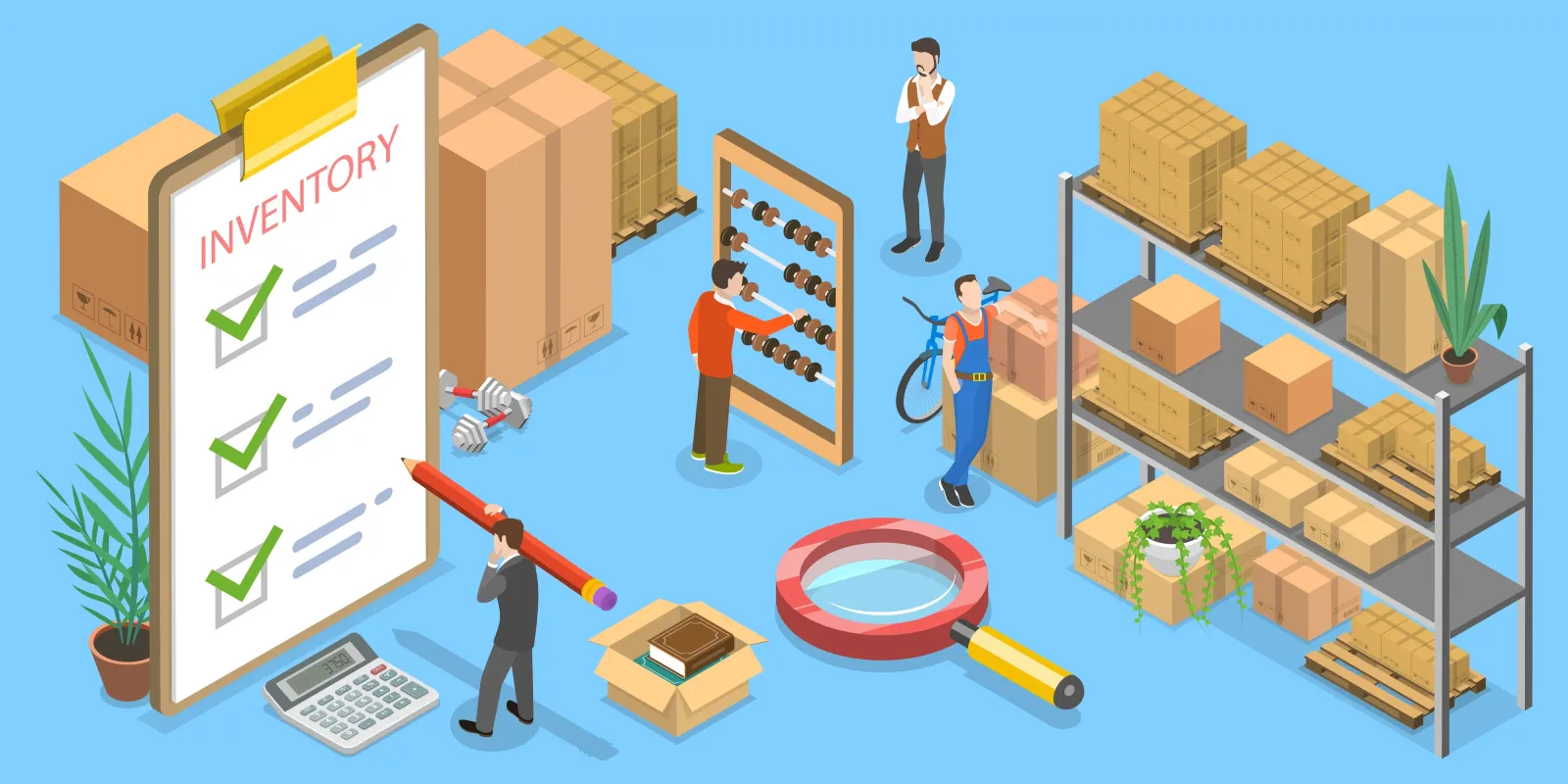The Impact of Global Logistics and Fulfillment on Inventory Management and Cost Efficiency
Global logistics and fulfillment have reshaped how modern businesses control inventory, use warehouse space, and manage operational costs. With international supply chains becoming more complex, efficient fulfillment systems and global logistics networks have become essential for maintaining speed, transparency, and cost control.

1. Global Logistics and Inventory Accuracy
Accurate inventory is the foundation of any successful business operation. Global logistics systems combine real-time tracking, data integration, and automation to ensure businesses know exactly where their products are at all times.
1.1 Real-Time Tracking Reduces Errors
Modern fulfillment platforms use IoT sensors, barcodes, and RFID technology to monitor every movement — from supplier shipment to warehouse arrival and final delivery. This level of tracking minimizes data entry mistakes and provides an instant view of stock levels across multiple countries. Instead of manual spreadsheets or delayed updates, logistics software syncs data across channels, giving teams accurate insights at any moment.
1.2 Automated Replenishment Improves Planning
When connected to ERP or inventory systems, global logistics solutions can automatically trigger replenishment orders when stock drops below set thresholds. This automation reduces human error and prevents overstocking or understocking, which are common cost drivers. It also helps businesses respond to fluctuating demand in different markets without slowing down fulfillment.
1.3 Centralized Data Across Borders
Businesses with multiple regional warehouses often face data silos. Global logistics networks eliminate this problem by unifying data from each node into a centralized dashboard. Teams can analyze global trends — such as which products sell faster in certain regions — and adjust purchasing or distribution accordingly. Centralized visibility ensures accuracy from production to delivery.
2. Optimizing Warehouse Space Through Fulfillment Networks
Space optimization is a major factor in reducing warehouse costs. Global fulfillment networks give businesses flexibility to store inventory closer to customers and utilize available capacity efficiently.
2.1 Distributed Warehousing Cuts Transit Time
Instead of one large warehouse, many global companies now operate distributed fulfillment centers. By storing products in strategic regions — North America, Europe, or Asia — delivery times shrink while shipping costs drop. This distributed model also reduces the need for excessive buffer inventory in a single location.

2.2 AI-Driven Slotting and Storage
Modern warehouse management systems (WMS) powered by AI can analyze order history and product velocity to assign optimal storage positions. Fast-moving items are placed closer to packing areas, while slow movers are stored in high racks or back sections. This optimization increases pick speed, saves floor space, and reduces labor time per order.
2.3 Cross-Docking for Fast Turnover
Cross-docking — where incoming goods are immediately prepared for outbound shipment without long-term storage — is another key strategy enabled by global logistics solutions. It minimizes warehouse congestion and ensures products move through facilities faster, improving overall space utilization and reducing inventory carrying costs.
3. Cost Efficiency Through Smarter Fulfillment Operations
Operational efficiency depends on how well businesses balance cost with performance. Effective logistics and fulfillment management cut waste, improve delivery speed, and increase profit margins.
3.1 Lower Shipping Costs with Smart Routing
Global logistics providers use advanced routing algorithms to choose the most efficient shipping paths. By analyzing real-time data on routes, fuel costs, and customs processing times, these systems automatically select cost-effective transport methods. This optimization not only cuts freight costs but also shortens delivery times — a win for both the business and the customer.
3.2 Reduced Labor Costs Through Automation
Automation tools such as robotic pickers, conveyor systems, and automated labeling reduce the need for manual handling. A warehouse that automates 50% of its processes can often lower labor expenses by up to 30%. Automated systems also work 24/7, ensuring faster order fulfillment without adding overtime costs.
3.3 Minimizing Returns with Better Fulfillment Accuracy
Returns are one of the biggest hidden costs in global e-commerce. With precise fulfillment processes — accurate picking, proper packaging, and real-time order validation — error rates drop sharply. Fewer mistakes mean fewer returns, lower transportation costs, and higher customer satisfaction.
4. Strengthening Supply Chain Resilience

Cost efficiency isn’t just about saving money; it’s also about preventing losses from disruptions. Global logistics and fulfillment systems strengthen supply chain resilience by diversifying sourcing and increasing flexibility.
4.1 Multi-Region Fulfillment Prevents Delays
Having multiple fulfillment centers across continents ensures continuity when one region faces disruptions like strikes or natural disasters. Businesses can reroute orders through unaffected regions and continue operating smoothly, avoiding costly downtime.
4.2 Visibility for Proactive Decision-Making
With end-to-end visibility, companies can detect potential bottlenecks early — such as delayed shipments or customs issues — and act before they escalate. Predictive analytics also allow planners to anticipate demand spikes or supplier delays, keeping inventory balanced and costs controlled.
5. Enhancing Customer Satisfaction While Reducing Costs
An efficient global logistics and fulfillment system doesn’t just improve internal operations; it directly affects customer experience, which ultimately drives revenue.
5.1 Faster Delivery at Lower Cost
When inventory is stored closer to customers, shipping becomes faster and cheaper. Fulfillment partners with global networks often negotiate bulk carrier rates, further reducing per-package costs. Customers receive their orders faster, which strengthens brand trust and encourages repeat purchases.
5.2 Sustainable Logistics for Long-Term Savings
Green logistics — like using electric delivery vehicles, optimizing packaging, and reducing empty returns — not only helps the environment but also cuts costs. Lighter packaging reduces fuel consumption, and route optimization minimizes mileage. Over time, sustainability translates into measurable financial efficiency.
6. How Technology Integrates Everything
Behind every successful logistics operation is a layer of technology connecting all the moving parts.
6.1 Cloud-Based Fulfillment Platforms
Cloud-based fulfillment systems connect suppliers, warehouses, and carriers into a unified network. Businesses can access performance metrics, order statuses, and cost analytics from anywhere. This transparency makes decision-making faster and more data-driven.
6.2 API Integration with E-Commerce Platforms
Global logistics providers now offer API connections that sync directly with e-commerce stores, automatically updating stock levels and order statuses. This eliminates manual updates and ensures customers always see accurate product availability — preventing overselling or delays.

6.3 Predictive Analytics for Smarter Inventory Control
Using historical data and machine learning, predictive models forecast demand based on seasonality, promotions, and regional trends. Businesses can then adjust inventory allocations proactively, avoiding expensive overstocking or urgent restocking shipments.
7. The Long-Term Benefits of Integrated Global Fulfillment
When logistics and fulfillment systems work together seamlessly, the results extend far beyond operational savings. Businesses gain a strategic edge in market responsiveness and global competitiveness.
7.1 Scalable Growth
A global fulfillment structure enables rapid expansion into new markets without building new infrastructure. Businesses can plug into existing networks, start selling internationally, and fulfill locally through third-party logistics (3PL) providers.
7.2 Data-Driven Cost Control
Every shipment, storage decision, and order processed generates valuable data. Companies that analyze this data can continuously refine cost structures — from transportation to packaging — creating a cycle of improvement that compounds savings over time.
7.3 Consistent Brand Experience Worldwide
A unified fulfillment network ensures that whether a customer orders from Tokyo, Paris, or Los Angeles, they receive the same delivery speed and service quality. This consistency builds brand loyalty, reduces customer service costs, and increases retention.
Conclusion
Global logistics and fulfillment are no longer just backend functions — they are strategic tools that shape cost efficiency and customer satisfaction. By improving inventory accuracy, optimizing warehouse space, and integrating technology-driven fulfillment, businesses can achieve leaner operations and stronger global reach. Companies that invest in smart logistics today gain not only operational savings but also the agility to meet tomorrow’s challenges with confidence.
Industry Insights
news via inbox
Nulla turp dis cursus. Integer liberos euismod pretium faucibua







